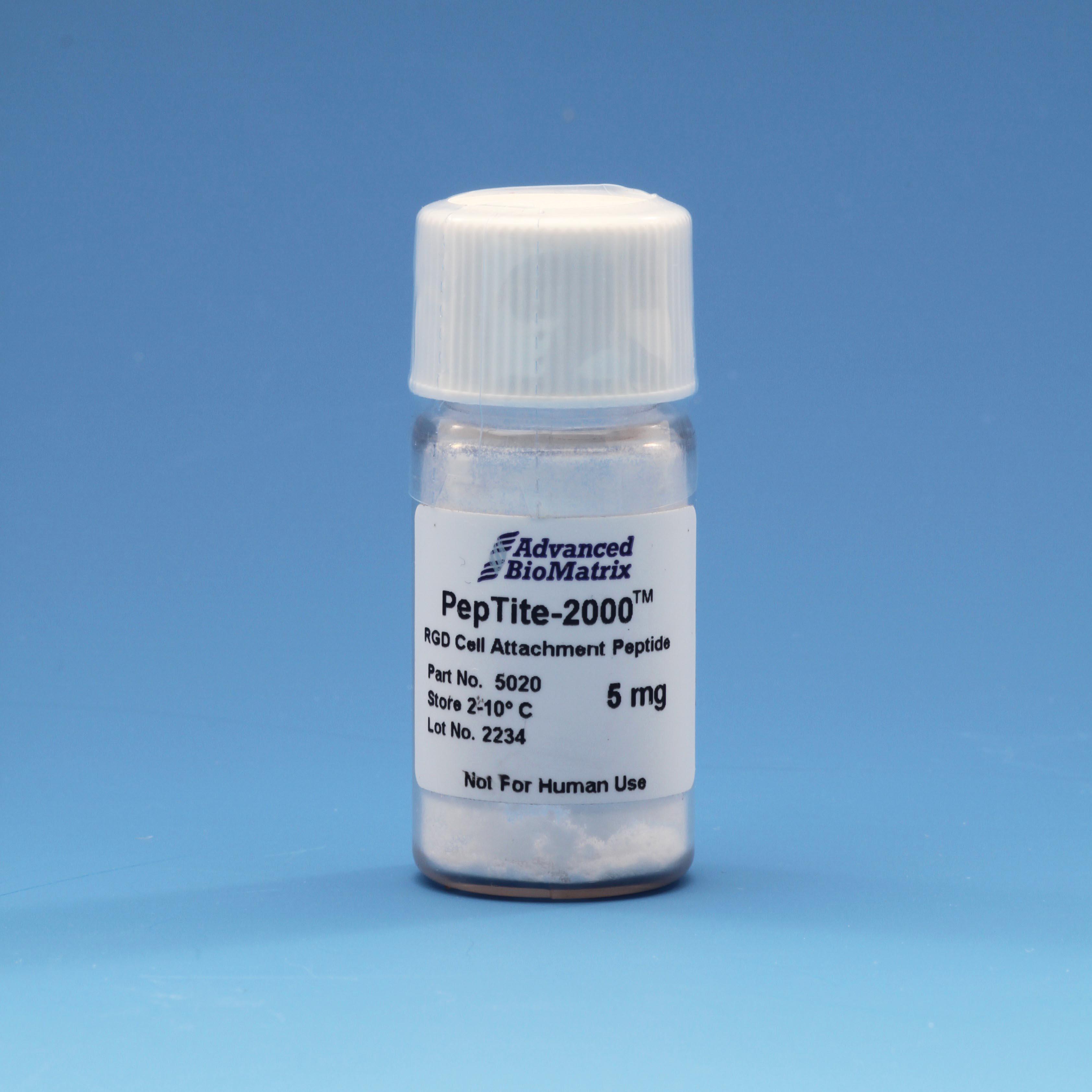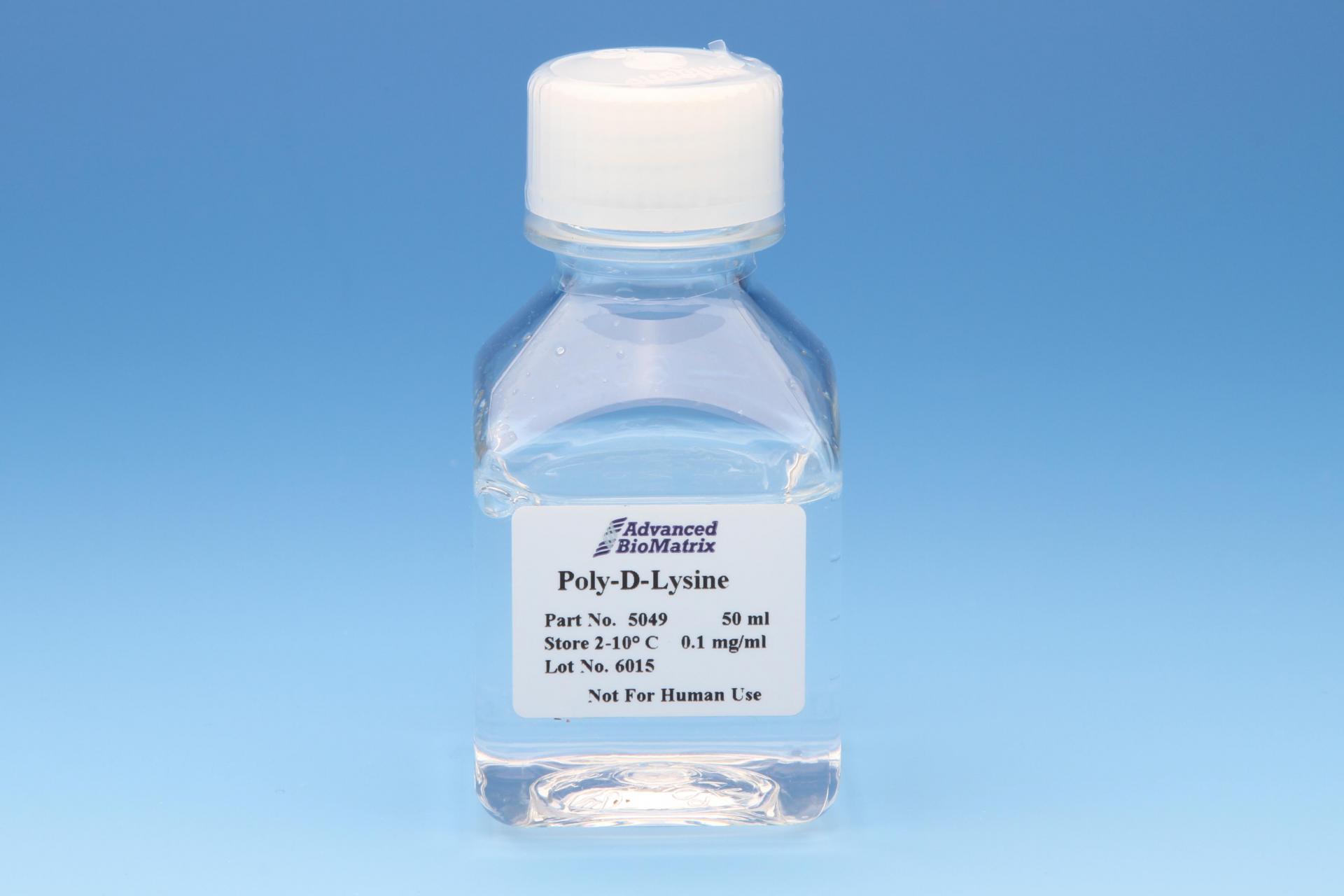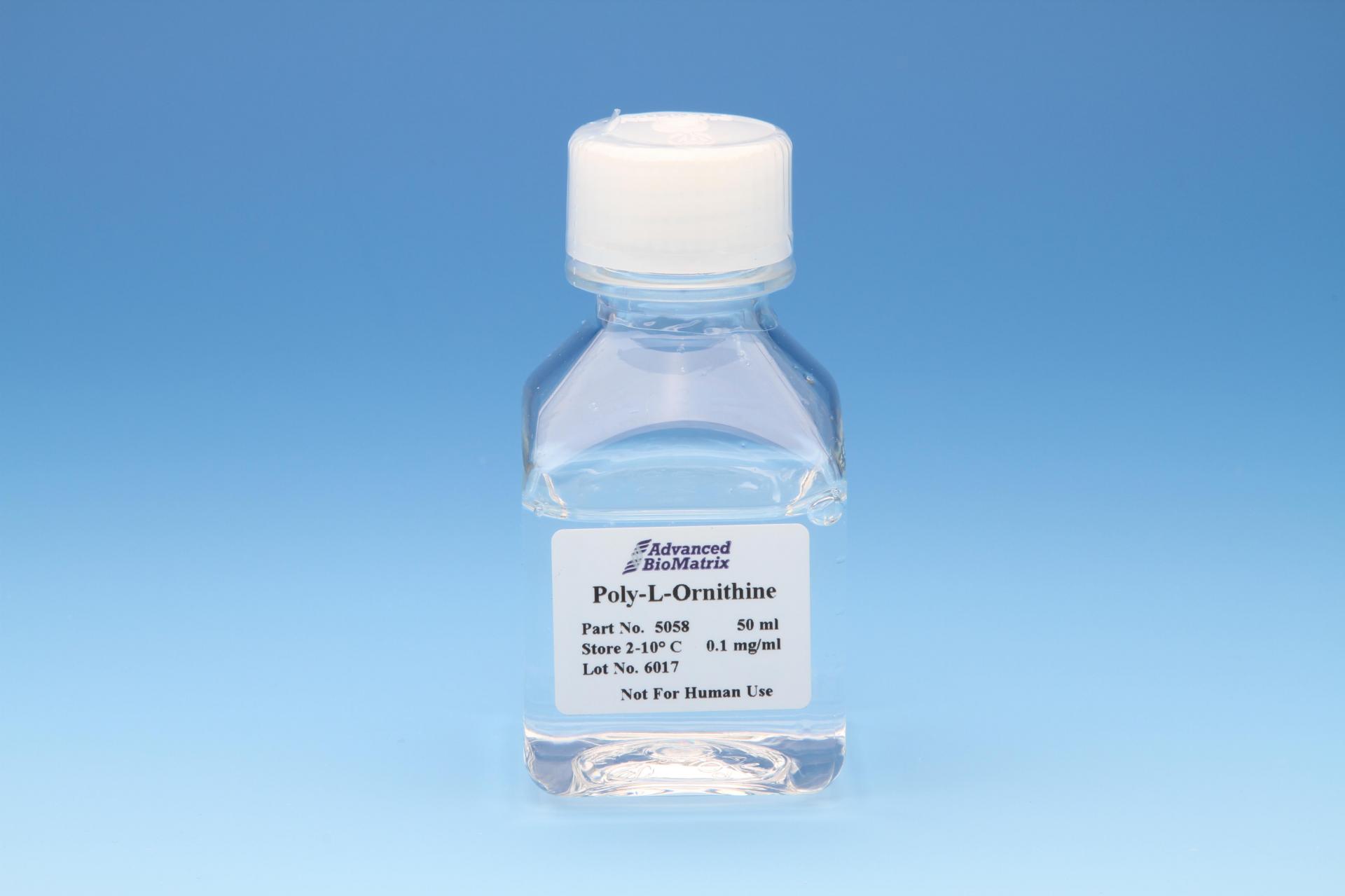-
Collagen
-
Type I - Atelocollagen
- PureCol® Solution, 3 mg/ml (bovine) #5005
- Nutragen® Solution, 6 mg/ml (bovine) #5010
- FibriCol® Solution, 10 mg/ml (bovine) #5133
- PureCol® EZ Gel, Solution, 5 mg/ml (bovine) #5074
- PureCol® Lyophilized, 15 mg (bovine) #5006
- VitroCol® Solution, 3 mg/ml (human) #5007
- VitroCol® Lyophilized, 15 mg (human) #5008
-
Type I - Telocollagen
- TeloCol®-3 Solution, 3 mg/ml (bovine) #5026
- TeloCol®-6 Solution, 6 mg/ml (bovine) #5225
- TeloCol®-10 Solution, 10 mg/ml (bovine) #5226
- RatCol® for 3D gels, Solution, 4 mg/ml (rat) #5153
- RatCol® High Concentration, Solution, 10 mg/ml (rat)
- RatCol® lyophilized, 100 mg (rat)
- RatCol® for Coatings, Solution, 4 mg/ml (rat) #5056
- Type I - Insoluble Collagen
- Type I - Bioinks
- Type II Collagen
- Type III Collagen
- Type IV Collagen
- Collagen Standard
- PureCol® Collagen Coated Plates
- Collagen Scaffolds
- Collagen Hybridizing Peptides
-
Type I - Atelocollagen
- Tunable Stiffness
- CytoSoft® Rigidity Plates
-
Bioprinting
- Support Slurry for FRESH Bioprinting
- Collagen Bioinks for Extrusion Bioprinting
- GelMA Bioinks for Extrusion Bioprinting
- Photoinitiators
- Bioinks and Components for DLP Bioprinting
- Bioink Components
- Methacrylated Collagen
- Methacrylated Gelatin
- Methacrylated Hyaluronic Acid
- Diacrylates
- Methacrylated Polysaccharides
-
3D Hydrogels
- Thermoreversible Hydrogel
- Silk Fibroin
-
Type I Collagen for 3D Hydrogels
- PureCol® Solution, 3 mg/ml (bovine) #5005
- Nutragen® Solution, 6 mg/ml (bovine) #5010
- FibriCol® Solution, 10 mg/ml (bovine) #5133
- PureCol® EZ Gel, Solution, 5 mg/ml (bovine) #5074
- VitroCol® Solution, 3 mg/ml (human) #5007
- TeloCol®-3 Solution, 3 mg/ml (bovine) #5026
- TeloCol®-6 Solution, 6 mg/ml (bovine) #5225
- TeloCol®-10 Solution, 10 mg/ml (bovine) #5226
- RatCol® for 3D gels, Solution, 4 mg/ml (rat) #5153
- HyStem® Thiolated Hyaluronic Acid
- Methacrylated Collagen
- Methacrylated Gelatin
- Methacrylated Hyaluronic Acid
- Diacrylates
- Collagen Sponges
- Methacrylated Polysaccharides
- Extracellular Matrices
- HyStem / Hyaluronic Acid
-
Adhesion Peptides / Proteins
-
Recombinant Adhesion Proteins
- CD2, 0.5 mg/ml #5086
- CDH3, 0.5 mg/ml #5124
- CDH13, 0.5 mg/ml #5125
- CD14, 0.5 mg/ml #5089
- CDH18, 0.5 mg/ml #5090
- CD40, 0.5 mg/ml #5093
- CD86, 0.5 mg/ml #5096
- CD164, 0.5 mg/ml #5100
- CD270, 0.5 mg/ml #5127
- CD274, 0.5 mg/ml #5126
- CD276, 0.5 mg/ml #5123
- E-Cadherin (CD324), 0.5 mg/ml #5085
- ICAM2, 0.5 mg/ml #5107
- Adhesion Peptides
- Collagen Hybridizing Peptides
-
Recombinant Adhesion Proteins
- Reagents
- Assays
Peptite-2000®
RGD Peptide, Powder (Recombinant)
Catalog #5020
Peptite-2000®
RGD Peptide, Powder (Recombinant)
Catalog #5020
PEPTITE-2000® is a synthetic peptide containing the RGD cell attachment sequence found in fibronectin, vitronectin and many other matrix and serum proteins. PEPTITE-2000® is supplied as 5 mg of sterile powder.
Product Description
PEPTITE-2000® is a synthetic peptide containing the RGD cell attachment sequence found in fibronectin, vitronectin and many other matrix and serum proteins. This RGD peptide has been specifically engineered to spontaneously adhere to a variety of surfaces such as polystyrene (either tissue culture treated or non-treated), hollow fibers made of cellulose, glass, polycarbonate membranes and many other materials. This binding is mediated via a hydroscopic C-terminal sequence. The RGD motif is present at the N-terminal end of the peptide, allowing for optimal cell attachment via integrin receptors.
PEPTITE-2000® can be substituted as the primary cell attachment component in a chemically defined animal component-free culture system.
|
Parameter, Testing, and Method |
PEPTITE-2000® |
|
Form |
Powder |
|
Package Size |
5 mg |
|
Sterilization Method |
Irradiation |
|
Peptide Sequence |
Ac-Gly-D-Arg-Gly-Asp-Ile-Pro-Ala-Ser-Ser-Lys-Gly-Gly-Gly-Gly-Ser-D-Arg-Leu-Leu- Leu-Leu- Leu-Leu-D-Arg-NH2 |
|
Counter Ion |
Acetate |
|
Purity Confirmed by RP-HPLC |
>95% |
|
Identity Confirmed by Mass Spectrometry |
Characteristic |
|
Cell Attachment Assay |
Pass |
|
Sterility - USP modified |
No growth |
|
Storage Temperature |
2-10°C |
|
Shelf Life |
Minimum of 6 months from date of receipt |
PEPTITE-2000® is supplied in sterile 5 mg quantities.
Directions for Use
Download the full PDF version or continue reading below:
Use these recommendations as guidelines to determine the optimal coating conditions for your culture system. To maintain sterility, perform all operations in a laminar flow hood. Two options are provided:
Procedure A
- Remove cap and add 5 mL of serum-free medium or PBS to the bottle.
- Replace cap and vortex contents vigorously. Ensure that the PEPTITE-2000® is completely solubilized. The solution will remain slightly hazy.
- Transfer desired volume of solution from the bottle to a dilution vessel. Dilute to desired concentration using serum-free medium or PBS. A typical working concentration may range from 0.1 to 10 µg/mL.
- Add appropriate amount of diluted material to culture surface.
- Incubate at room temperature or 37°C, covered, for 1-2 hours.
- After incubation, aspirate remaining material.
- Rinse plates carefully with dH2O– avoid scratching bottom surface of plates.
- Plates are ready for use. They may also be stored at 2-8°C damp or air dried if sterility is maintained.
- Store remaining solubilized PEPTITE-2000® at 2 to 10°C.
Additional note: Include divalent cations (Calcium, Magnesium, or Manganese) in cell attachment solution to obtain optimum cell binding.
Procedure B
- Remove cap and add 5 mL of sterile 70% Ethanol
- Replace cap and vortex contents. Ensure that the PEPTITE-2000® is completely solubilized.
- Transfer desired volume of solution from the bottle to a dilution vessel. Dilute to the desired concentration using 70% Ethanol. Concentrations from 0.1 to 10 ug/mL should be tested.
- Add appropriate amount of diluted material to culture surface.
- Leave the coated container, uncovered, in a laminar flow hood until the wells are dry.
- Rinse plates carefully with dH2O– avoid scratching bottom surface of plates.
- Plates are ready for use.
- Store remaining solubilized PEPTITE-2000® at 2-10°C.
Product References
References for Peptite-2000®:
Geuss, Laura R., Scott Gorthey, and Laura J. Suggs. "Magnetic Attraction of Paramagnetic Beads Influences Lineage Commitment in Embryoid Bodies."
Geuss, Laura R., et al. "Paramagnetic beads and magnetically mediated strain enhance cardiomyogenesis in mouse embryoid bodies." PloS one 9.12 (2014): e113982.
Sanchez‐Rodriguez, Sandra P., et al. "Plasmonic activation of gold nanorods for remote stimulation of calcium signaling and protein expression in HEK 293T cells." Biotechnology and bioengineering 113.10 (2016): 2228-2240.
Saito, Masaya, et al. "Intestinal epithelial cells with impaired autophagy lose their adhesive capacity in the presence of TNF-α." Digestive diseases and sciences 57.8 (2012): 2022-2030.
Product Certificate of Analysis
No result for .
Product Disclaimer
This product is for R&D use only and is not intended for human or other uses. Please consult the Material Safety Data Sheet for information regarding hazards and safe handling practices.





